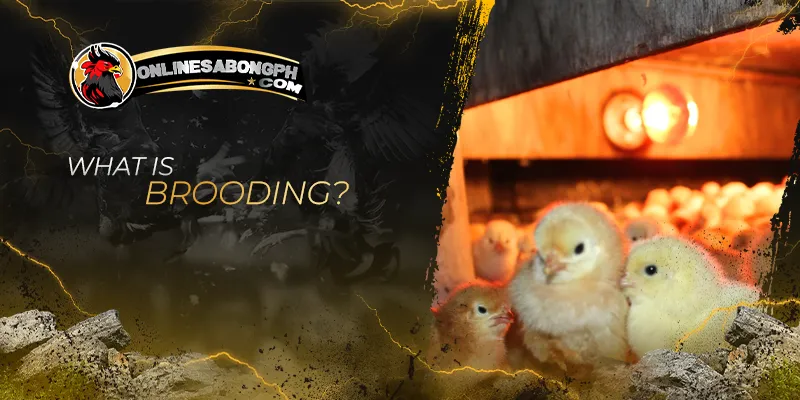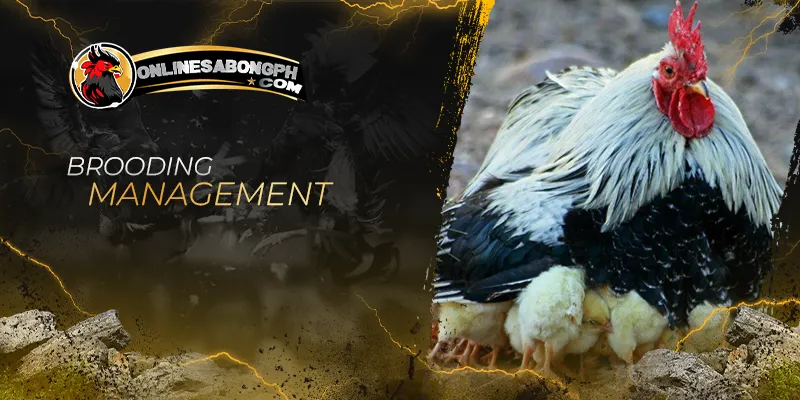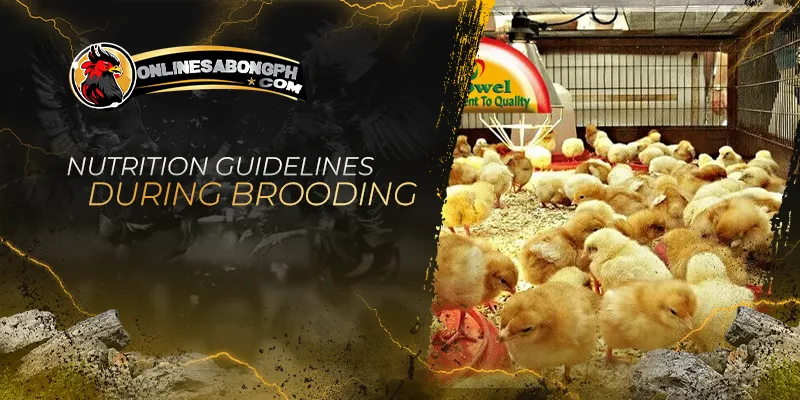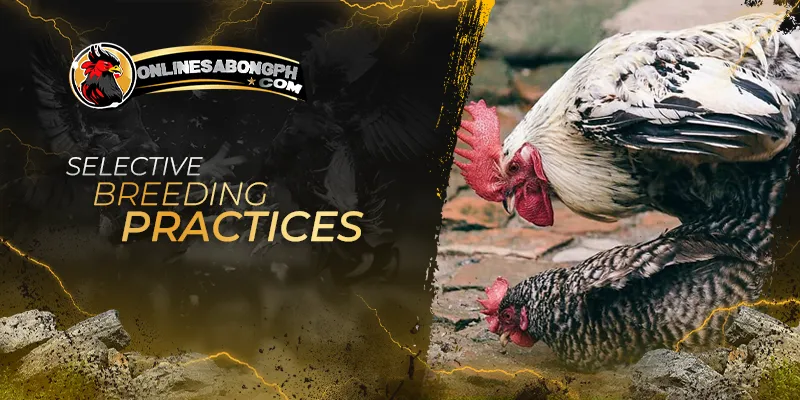In the world of gamefowl rearing, two aspects that significantly influence the health, vitality, and performance of these roosters are brooding and meticulous bloodline maintenance. This comprehensive guide delves deep into the nuances of brooding and the strategic preservation of gamefowl bloodlines, ensuring that enthusiasts and breeders alike are equipped with the knowledge to foster robust and superior roosters.
What is Brooding?
Brooding of Chicks
Brooding is the essential early stage in a gamefowl chick’s life. It refers to the period when chicks cannot yet maintain their own body temperature and rely on external warmth for survival and development. During this time, it’s vital to provide a carefully controlled environment that offers similar conditions a mother hen would naturally create.
Why is Brooding So Important?
- Survival: Chicks can easily become chilled and die without sufficient warmth. Brooding ensures they stay at the right temperature for optimal health.
- Growth and Development: Proper brooding promotes strong growth, feather development, and overall organ function, laying the foundation for a healthy and robust bird.
- Imprinting: Some experts believe that brooding helps chicks form early bonds or imprint on their caretaker, potentially influencing future behavior.
Key Elements of Successful Brooding
Warmth
- Temperature: The ideal brooding temperature starts around 95°F (35°C) for the first week and gradually decreases by 5°F each week until chicks are fully feathered.
- Heat Source: Options include heat lamps, brooder plates, or even a warm water bottle in a pinch. Monitor the chicks’ behavior to ensure they are comfortable (not huddled together or panting).
Space
- Brooder: A dedicated brooder box or pen provides a safe and contained environment. It should be draft-free and large enough for chicks to move around comfortably.
- Bedding: Soft, absorbent bedding like pine shavings helps maintain cleanliness and chick comfort.
Food and Water
- Chick Starter: Provide a high-quality chick starter feed formulated for gamefowl or meat roosters.
- Shallow Waterers: Use shallow dishes to minimize drowning risk and ensure chicks can easily reach the water.
Hygiene
- Cleanliness: Change bedding regularly and clean food and water dishes daily to prevent disease and bacteria buildup.
Additional Tips:
- Observation: Watch your chicks closely. Their behavior tells you a lot! Huddling indicates they are cold; spreading out means they might be too hot.
- Gradual Transition: As chicks feather out, they begin slowly reducing temperature and acclimating to their regular housing.
Setting Up the Ideal Brooding Environment
Brooding Management
To give your gamefowl chicks the best chance at a healthy start, focus on these key aspects of their brooding space:
- Temperature Control
- The Right Heat: In the first week of life, the optimal temperature within the brooder is around 95°F (35°C). Every week following, reduce the temperature by approximately 5°F. Continue this until the chicks are fully feathered or the brooder temperature matches the ambient temperature of their regular housing.
- Heat Sources: Heat lamps are a common and effective way to warm the brooding area. Brooder plates, which provide heat from below, are another option. It’s essential to position the heat source so that chicks can move closer or further away according to their needs.
- Monitoring Matters: Don’t just rely on your thermostat! Observe your chicks to gauge their comfort. If they huddle tightly together, they are cold. If they spread out away from the heat source and heat, they are too warm. Make adjustments as needed.
- Bedding Materials and Setup
- Best Bedding: Pine shavings are ideal for their softness, absorbency, and ability to reduce odor. Other options include chopped straw or similar materials.
- Cleanliness is Key: Change the bedding frequently to keep it dry and prevent the buildup of bacteria that can cause disease.
- Watch for Slippery Surfaces: Don’t use newspaper or other smooth materials as bedding. These can lead to leg deformities when developing chicks.
- Light and Darkness Periods
- Importance of Light: Provide 14-16 hours of light a day. This keeps the chicks active, encourages eating and drinking, and helps them develop properly.
- Darkness for Rest: However, chicks also need uninterrupted periods of darkness for optimal rest and growth.
- Reduce Aggression: Consider a red heat lamp for both its warmth and reduced brightness. Red light has been shown to decrease pecking and potential cannibalistic behaviors among chicks.
Additional Considerations:
- Brooder Size: Ensure there’s enough space for chicks to move comfortably, access food and water, and find warmer and cooler spots. Overcrowding leads to stress and health problems.
- Ventilation: Provide fresh air without creating drafts that could chill the chicks.
- Protection: The brooder should be secure to keep out predators and prevent chicks from escaping.
Nutrition and Feeding During the Brooding Period
Brooding Nutrition Guidelines
Nutrition in the brooding period is all about balance. Gamefowl chicks need a starter feed that’s high in protein (approximately 18-20%) to support rapid growth and development. Here are some feeding guidelines:
- High-Protein Power: The heart of their diet should be a gamefowl-specific or meat bird starter feed containing around 18-20% protein. This protein level fuels their rapid growth and muscle development.
- More Than Just Protein: Ensure the feed also has the right balance of vitamins and minerals. These are essential for strong bones, feather growth, and overall health.
- Feeding Made Easy: Make sure food is constantly available. Chicks have tiny stomachs and eat small amounts frequently. Check their feeder regularly and refill as needed to avoid empty bowls.
- Keep a Watchful Eye: Observe how much your chicks are eating so you can make adjustments as they grow. This will help prevent wasted feed.
Warning Signs:
- Growth Problems: If chicks seem stunted, have weak feather development, or appear unusually lethargic, these could be signs their diet isn’t meeting their needs.
- Consult the Experts: Talk to experienced breeders or your feed store about possible nutritional supplements or changes to the chicks’ diet.
Getting nutrition right during brooding is an investment in your rooster’s future. A balanced diet now sets them up to be strong, healthy, and ready to reach their full athletic potential.
Gamefowl Bloodline Maintenance Strategies
In gamefowl breeding, bloodlines are like family trees. Understanding these bloodlines and how to strategically maintain them is key to producing roosters with the specific qualities you desire.
The Importance of Pure Bloodlines in Gamefowl
Here’s why breeders focus so carefully on keeping gamefowl bloodlines pure:
Preserving Traits: Each bloodline carries a unique set of genes that code for things like:
- Fighting style (high-flying, shuffler, etc.)
- Gameness (willingness to fight to the end)
- Cutting ability
- Body structure and conformation
- Disease resistance
Predictability: Breeding within a pure bloodline leads to more consistent results. You’re more likely to get chicks that demonstrate the traits you’re looking for.
Historical Legacy: Many bloodlines have been carefully developed over decades or even centuries. Maintaining them is a way of honoring the work of past breeders and preserving a piece of gamefowl history.
Strategies for Bloodline Maintenance
Here are the main ways breeders keep bloodlines strong:
- Record Keeping: Detailed records of your rooster’s ancestry are essential. This tells you which roosters are related and helps avoid accidental inbreeding.
- Selective Breeding: Choose your breeding stock wisely. Only breed roosters that perfectly represent the bloodline’s best qualities and that are free of genetic defects.
- Linebreeding: This involves breeding roosters that are somewhat related (like cousins) to reinforce desired traits while still introducing some genetic variety.
- Outcrossing: Occasionally, introducing a bird from a completely different bloodline can add new vigor, but it should be done very carefully and strategically to avoid diluting the main bloodline’s characteristics.
Important Note:
Inbreeding (breeding very closely related roosters) can be a tool but should be used with extreme caution. It can concentrate both good and bad traits, so it takes an experienced eye.
The Takeaway
Bloodline maintenance is an art and a science. It requires dedication, knowledge, and a careful balance between preserving the past and introducing the right amount of fresh genetic material. Done right, it’s how you create future champions!
Techniques for Tracking and Documenting Bloodlines
By diligently tracking your roosters pedigrees, health, and performance, you gain the insights needed to make informed breeding decisions. Let’s explore the strategies and tools that will help you document your bloodlines and unlock their full potential.
Record-Keeping Strategies
Meticulous record-keeping is the backbone of bloodline management. Think of it as the roadmap for your breeding program. Here’s what you should track:
Individual Bird Information:
- Parentage (who’s the mom, who’s the dad)
- Hatch date
- Unique identifiers (band numbers, leg tags, etc.)
- Physical characteristics (color, comb type, etc.)
Performance Data:
- Sparring/competition records
- Observations on fighting style, gameness, strengths, and weaknesses
Health History:
- Vaccinations
- Any illnesses or treatments
Methods of Record Keeping
- The Old-Fashioned Way: Physical notebooks or binders work well, especially if you prefer a hands-on approach. Create templates for consistent data entry.
- Spreadsheets: Excel or Google Sheets allow you to organize and sort data easily. You can also create formulas to calculate things like inbreeding percentages.
- Dedicated Software: Breeding software takes record-keeping to the next level! These programs often include:
- Pedigree charts that visualize bloodlines
- Tools to Analyze Potential Breeding Pairs
- Reminders for vaccinations and other healthcare
Using Technology
Technology is a powerful ally in the world of gamefowl breeding. Here’s why it’s worth considering:
- Ease of Use: Well-designed breeding software offers user-friendly interfaces and step-by-step guidance, even if you’re not tech-savvy.
- Data Analysis: These tools can analyze your data to reveal patterns and help you make smarter breeding choices.
- Accessibility: Many programs have mobile apps, letting you access your records from anywhere, whether you’re at home or at a show.
- Collaboration: Some software makes it easy to share data with other trusted breeders, expanding your knowledge and potential breeding options.
Detailed and organized records, whether in notebooks or sophisticated software, are the key to understanding and unlocking the potential within your gamefowl bloodlines.
Selective Breeding Practices
Selective breeding is where the art and science of gamefowl breeding truly intersect. It’s about carefully choosing which roosters to reproduce in order to pass on the most desirable qualities to the next generation.
Breeding Practices
Criteria for Selecting Breeding Stock
Don’t just breed any two roosters! Look for these key things:
- Health and Vigor: Only breed roosters that are in top physical condition. Good health is the foundation for strong offspring.
- Breed Standards: Choose roosters that are textbook examples of their bloodline and breed type. Think about body structure, feather quality, and other specific traits.
- Performance: If you value fighting ability, select hens and roosters with proven track records or who come from families with a history of success.
- Temperament: While some gameness and fighting drive is good, overly aggressive or flighty roosters may pass those less-than-ideal traits to their chicks.
Managing Genetic Diversity
This is a balancing act! Here’s how to keep bloodlines strong while avoiding the problems of inbreeding:
- Outcrossing within a Family: Sometimes, breeding roosters from different branches of the same bloodline can introduce enough variety without sacrificing the core traits.
- Strategic Introductions: Occasionally, bringing in a bird from a closely related, compatible bloodline can add fresh genes when needed. But tread carefully – too much outside influence can weaken the traits you’ve worked so hard to maintain.
- Crossbreeding: A Sometimes-Necessary Tool
- Crossbreeding (breeding roosters of different breeds or bloodlines) is used to add completely new traits. It might be done for specific reasons, like:
- Hybrid Vigor: Sometimes, a first-generation cross can result in very healthy, robust roosters.
- Adding a Specific Trait If another breed is known for one specific thing you want (like a certain cutting style), a crossbreed may be the way to introduce it.
Important:
Crossbreeding should be intentional and strategic. The resulting offspring may not maintain the core characteristics of your original bloodline.
Common Challenges in Brooding and How to Overcome Them
Brooding gamefowl is not without its challenges, from environmental stresses to health issues among chicks. Keeping a vigilant eye on the brooding environment and being proactive in disease management can mitigate these risks.
Temperature Fluctuations
Problem: Inconsistent temperatures stress chicks. Too cold, and they’ll get chilled, leading to illness or death. Too hot, and they risk overheating.
Solutions:
- Reliable Heat Source: Choose a heat lamp or brooder plate that you know will maintain a steady temperature.
- Thermometer: Don’t guess – use a thermometer placed at chick level to monitor the temperature regularly.
- Observation: Watch your chicks! Their behavior tells you a lot about whether they’re comfortable.
Drafts and Humidity
Problem: Drafts can chill chicks, while excessive humidity fosters mold and bacteria growth.
Solutions:
- Draft-Free Zone: Choose a brooding location protected from drafts but still with some ventilation.
- Humidity Control: Monitor humidity levels. If it’s too high, increase ventilation slightly or use a moisture absorber (like DampRid).
Disease and Parasites
Problem: Chicks are especially vulnerable to disease and parasites like coccidiosis or mites.
Solutions:
- Cleanliness is Key: Change bedding frequently, and clean food and water containers daily.
- Prevention: Consult your vet about preventative medications or supplements that may be appropriate for your flock.
- Quarantine: Isolate any sick chicks immediately to prevent the spread of illness.
Pasting Up
Problem: Wet droppings can build up around a chick’s vent, blocking elimination and causing serious health issues.
Solutions:
- Diet: Make sure chicks are eating the correct, high-quality starter feed.
- Check Vents: Inspect chicks regularly and carefully remove any dried droppings. A warm, damp cloth can help.
Cannibalism
Problem: Out of boredom or if conditions are overcrowded, chicks may start pecking at each other, leading to injury.
Solutions:
- Space: Ensure there’s enough room for chicks to move around comfortably.
- Enrichment: Provide distractions like small piles of feed to scratch in.
- Red Light: Consider using a red heat lamp, as the red light may reduce pecking behaviors.
The Takeaway
Brooding requires constant vigilance! By carefully managing their environment, keeping things clean, and providing the right nutrition, you’ll greatly increase the chances of your chicks growing up healthy and strong.
Conclusion
Mastering brooding and gamefowl bloodline maintenance requires dedication, knowledge, and a willingness to adapt and learn. By focusing on creating the optimal environment for chicks, maintaining detailed records, and employing strategic breeding practices, breeders can ensure the health, vitality, and competitiveness of their gamefowl for generations to come.
For more tips and strategies, visit us at onlinesabongphil.com.




